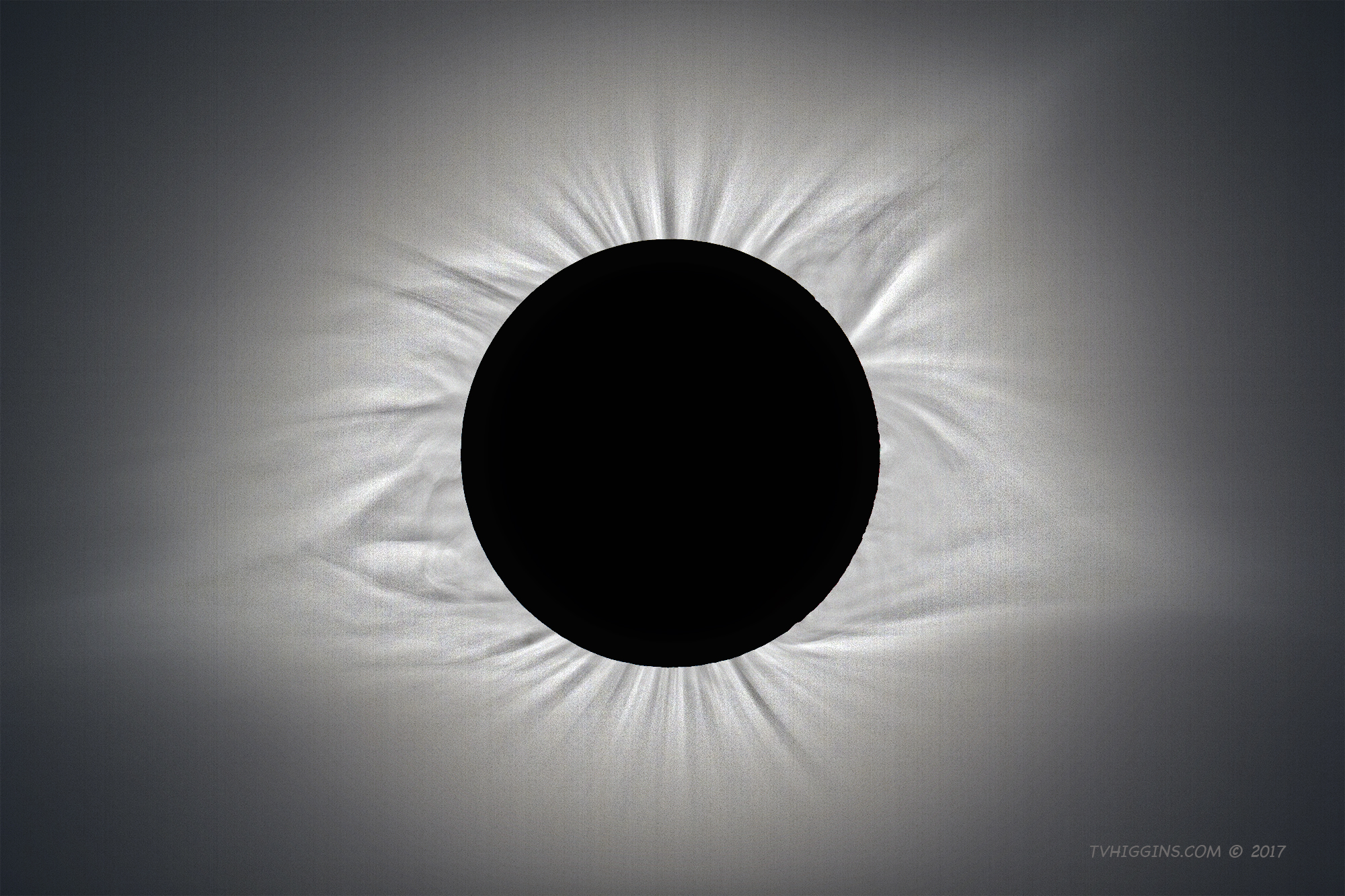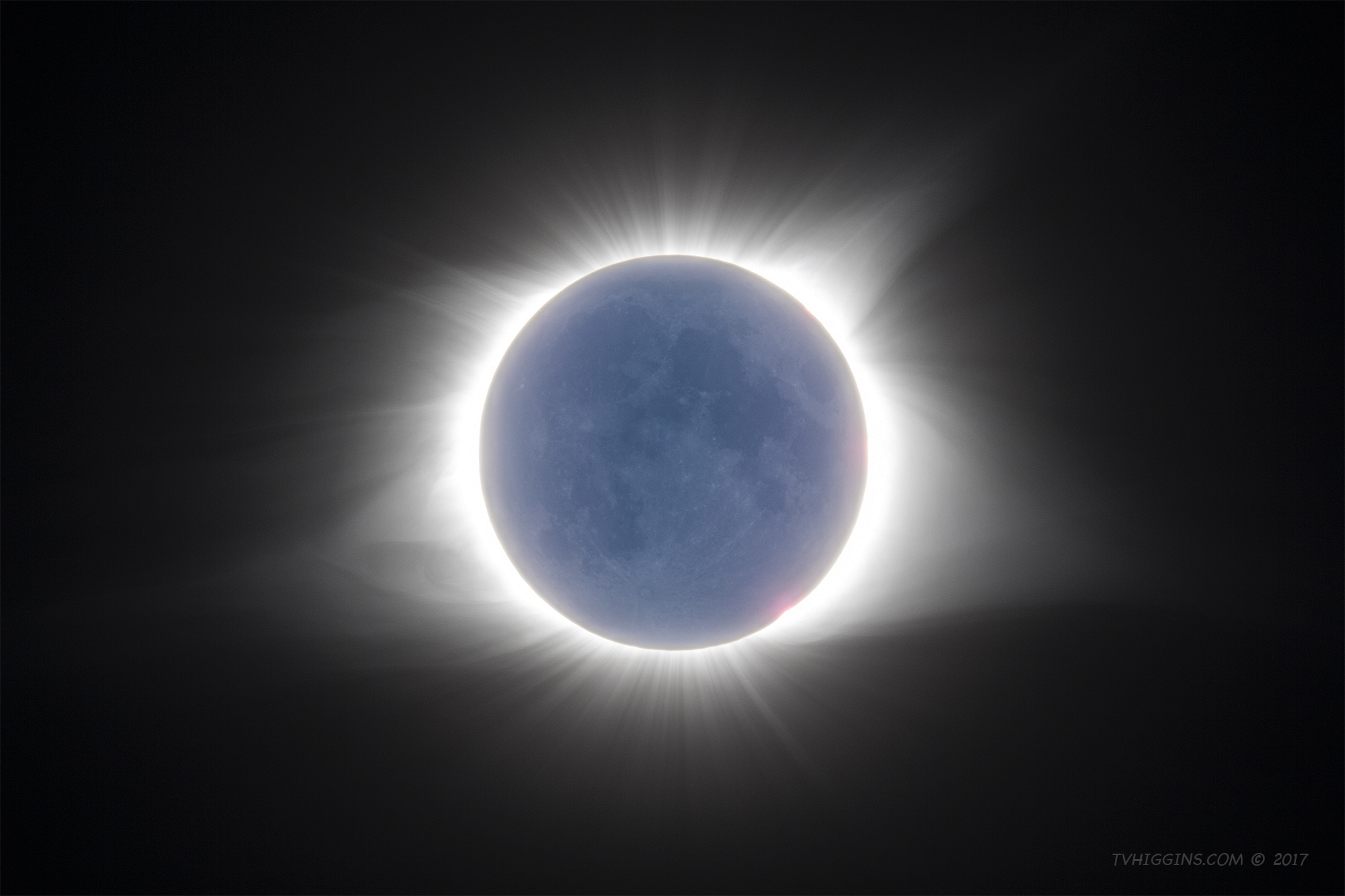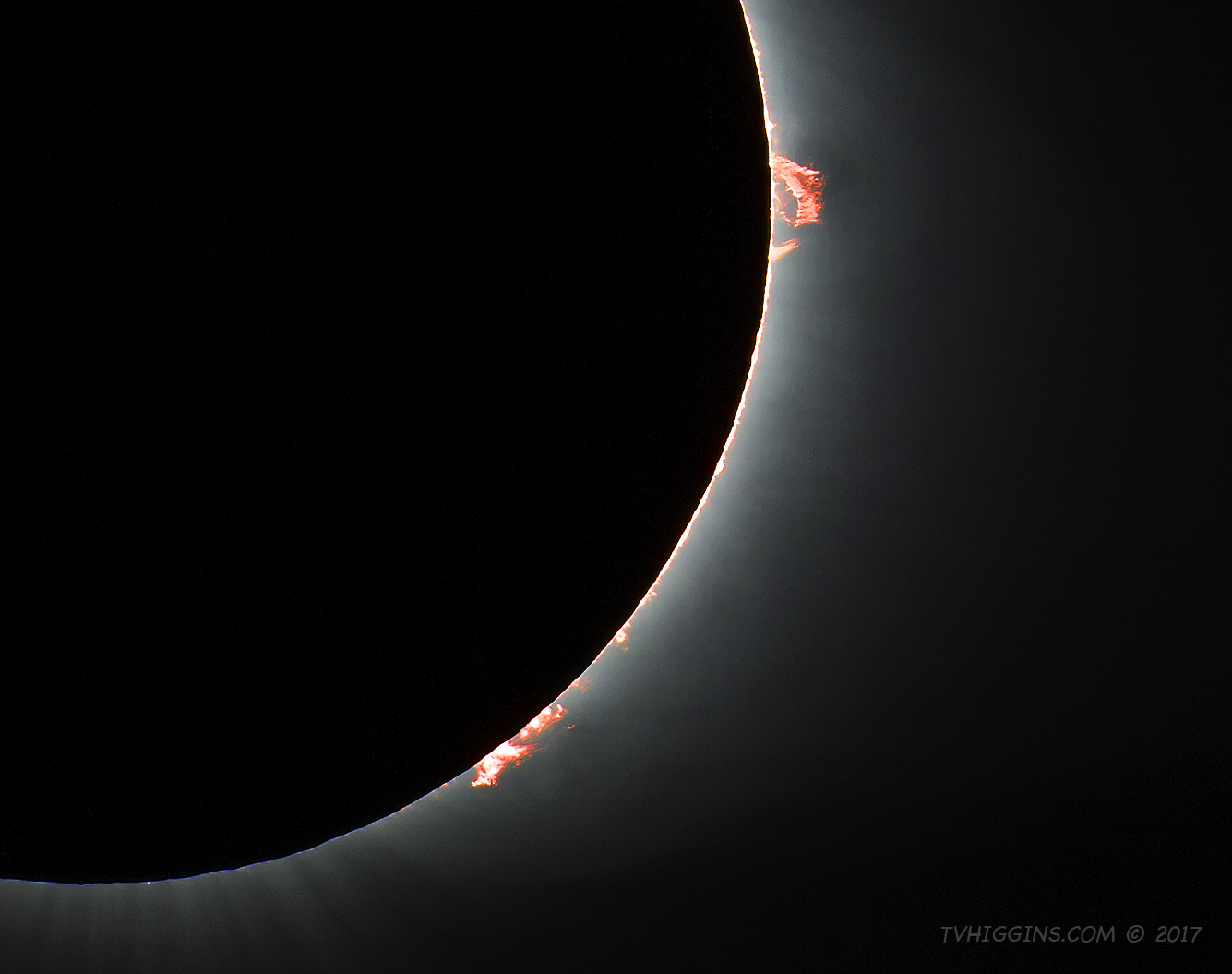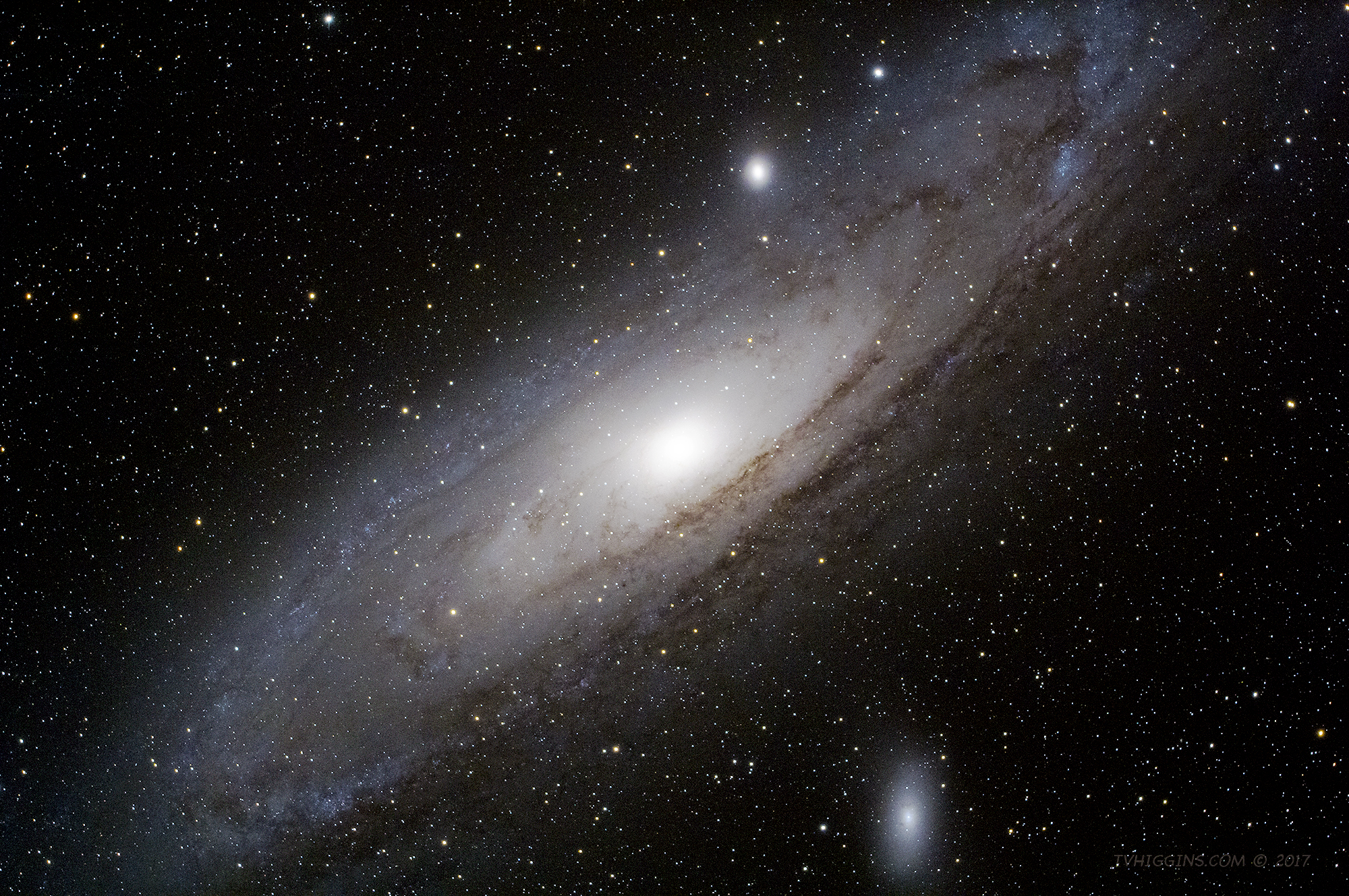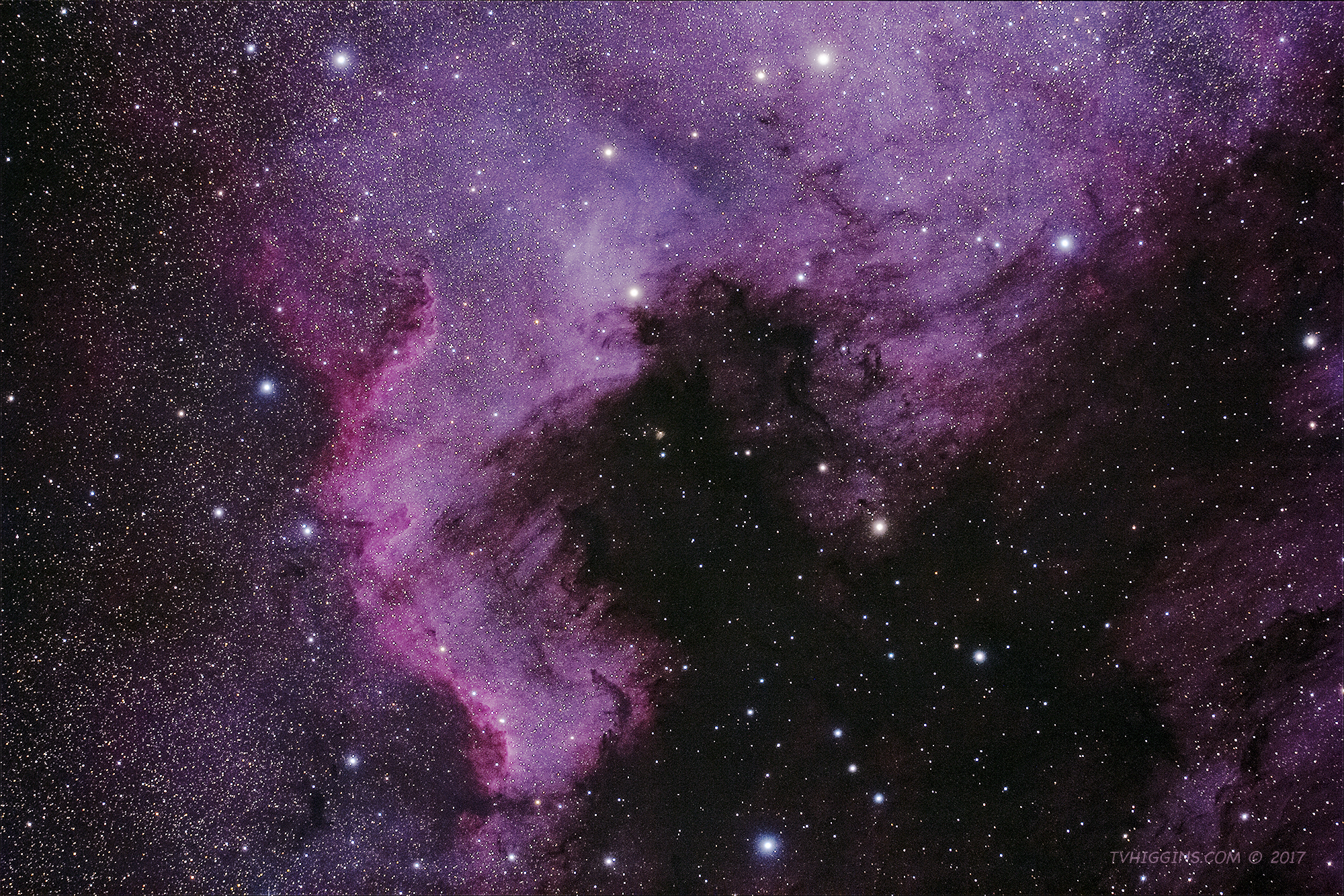2017 Solar Eclipse Coronal Study I
- Telescope: Stellarvue SVA130T-IS
- Mount: Losmandy G-11 with Gemini 2 controller
- Autoguiding: No
- Optical Configuration: 0.72x field flattener & reducer (f/5); no solar filter during totality
- Camera: Canon 60Da
- Light Frame(s): 13 full-stop, bracketed exposures from 1/2000 to 2 sec
- Calibration: None (no darks, no flats, no biases)
- Exposure Time(s): 1/2000 to 2 sec in full-stop increments
- ISO: 100
- Processing: Photoshop CC using the Pellett method
- Imaging Location: Prairie City, Ore.
This image uses the Pellett method to create a high-contrast study of the sun’s coronal structure during the 2017 solar eclipse. Note how the plasma streamers of the corona trace the magnetic field lines of the sun, like iron filings around a magnet.
